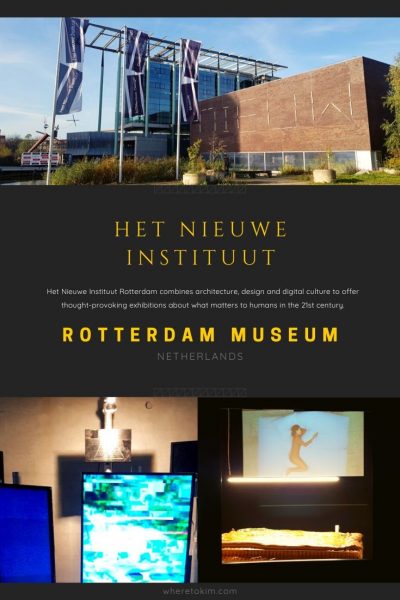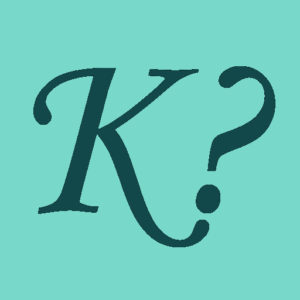Het Nieuwe Instituut Rotterdam combines architecture, design and digital culture to offer thought-provoking exhibitions about what matters to humans in the 21st century.
About Het Nieuwe Instituut ("The New Institute")
Het Nieuwe Instituut for Architecture, Design and Digital Culture “examines the designed world and how it is constantly being changed by new technologies, new ideas and shifting social priorities. Innovations […] will be expressed in both speculative explorations of the future and critical reflections on innovative movements past and present.”
It visualizes the challenge and also the opportunity that architecture brings when it responds to societal questions and technological change. Technologies infiltrate all aspects of society and have transformed not only the design process but also underlying geopolitical and economic contexts. From there it is only a small step to design thinking, another way to deal with the modern world. Everything can be designed nowadays, from your personal social media profile to a government campaign, showing the world only what you want it to see. But if that is what others see, do they really see you?
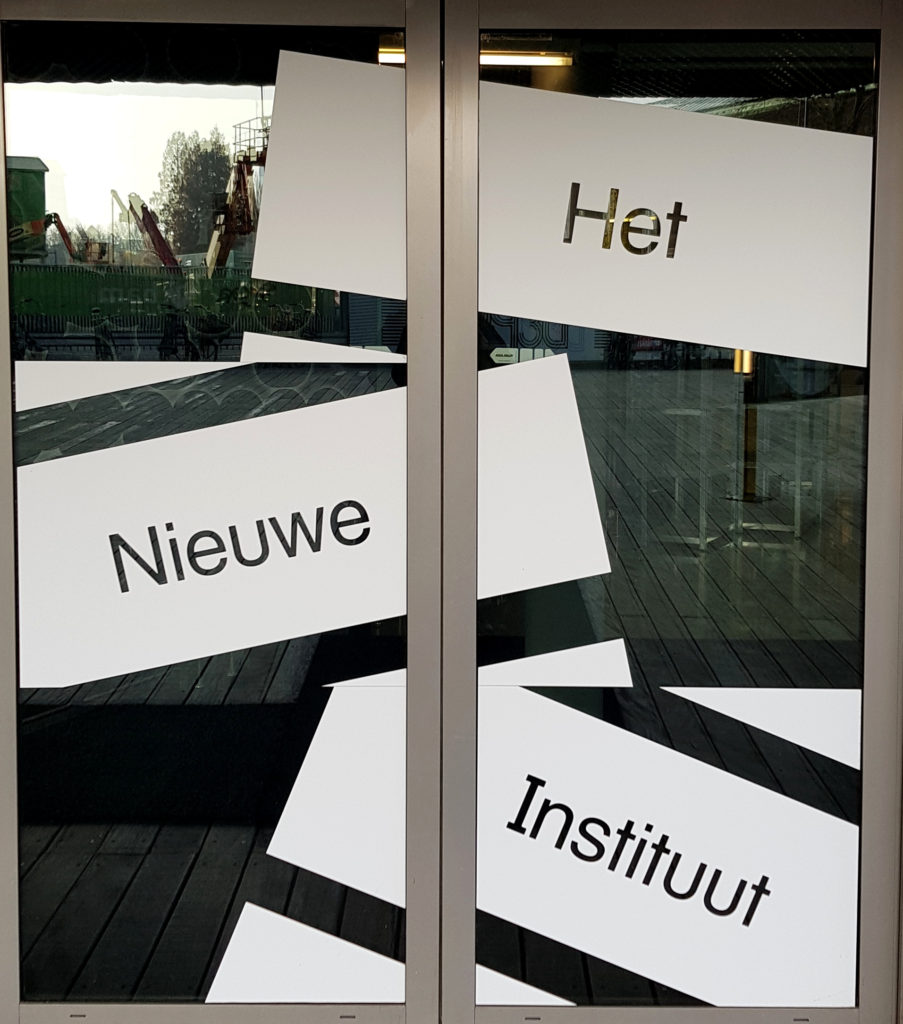
I See That I See What You Don’t See
The exhibition “I See That I See What You Don’t See” illustrates this perfectly. It is about the world we live in: a world that is always switched on and where the difference between day and night no longer seems relevant for productivity. You will see the complex relationships between light and dark, between seeing and not seeing and explore their effects on humans, the Earth and other organisms.
You enter the gallery and find yourself in a large gray concrete hall. The first thing you notice are the long mirrors hanging vertically from the ceiling, immediately changing your perspective of the room around you. You read the information explaining the meaning of the exhibition but your attention is drawn by the mirrors and the light falling in from the sun outside through sunny patterns. Clearly, the light is distracting you from what you were doing, so you might as well walk between the mirrors, turning around and around the observe the room from different angles.
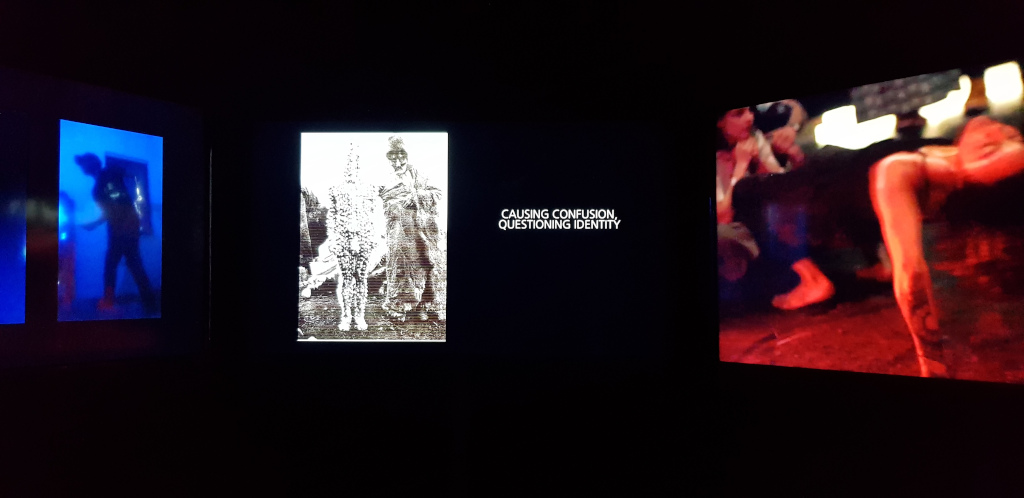
In the middle of the room is a black dome. When you get near the dome you notice a voice from a speaker. You’re not alone. In a small room that you can’t access you see a bed and a picture of a woman on the wall behind it. You can’t get to the woman. Suddenly you see an arrow on the dome, pointing at the entrance. You go in and enter a black world but not entirely black. There are lights on the ceiling telling stories and alcoves with movies. Again you see the woman and from this perspective, she looks even more locked up. On the floor and on the ceiling you can read more about a world that is always switched on.
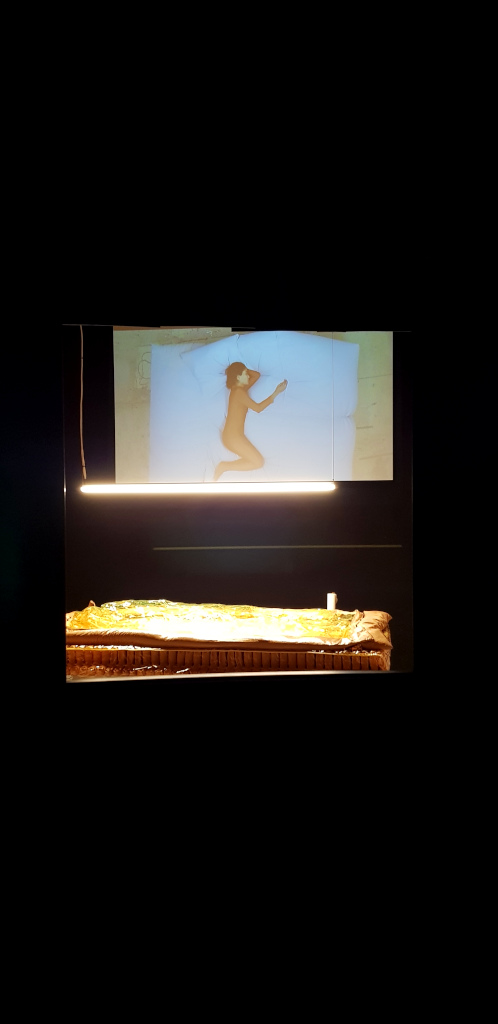
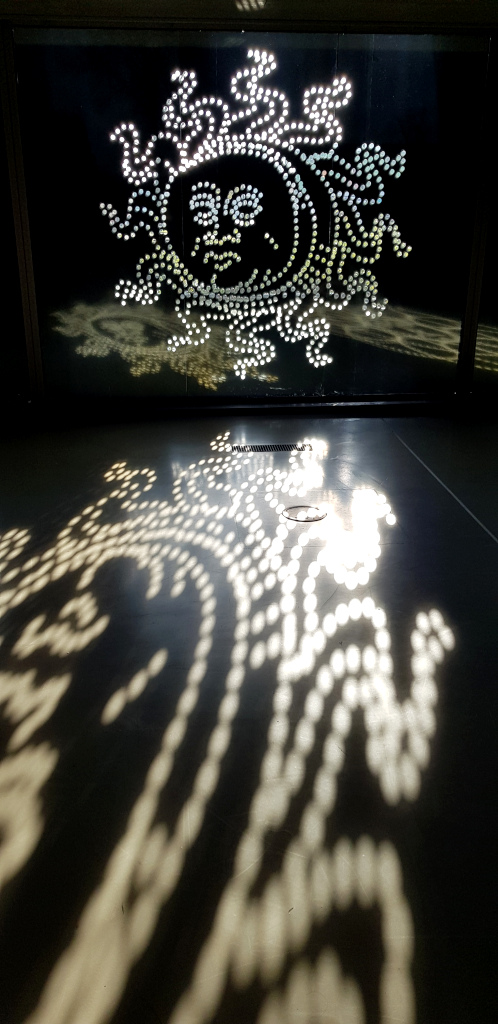
Everything, from the sounds to the use of the room, the colors and the images illustrate that it is all around you. You might not always be aware of it but it is there and especially in the dome you can feel the pressure. A very impressive feat.
The exhibition “I See That I See What You Don’t See”, previously the official Dutch contribution to the XXII Triennale di Milano, can be seen in Rotterdam from March 1 until December 29, 2019. If you have the chance, do stop by as it is a very interesting exhibition to experience.
Animal Encounters
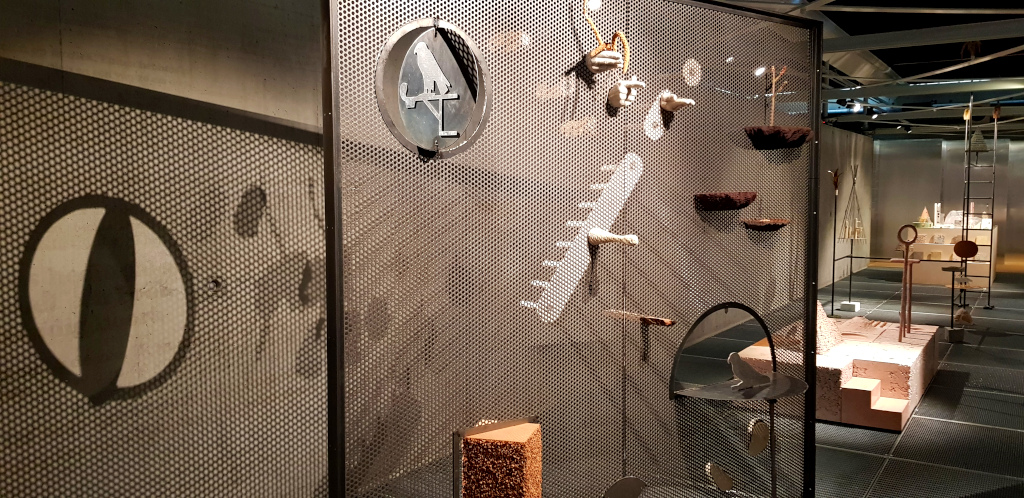
Nearly hidden behind walls you can find the stairs to the galleries upstairs. The gallery on the second floor is currently under construction but from December 1, 2019, until April 12, 2020, you can see “The Hoodie”, about the role of a fashion garment as a socio-political carrier, here.
On the third floor, you can find the exhibition “Animal Encounters” between October 10, 2019, and January 26, 2020. This exhibition visualizes how architecture can facilitate the encounter between humans and other animals.
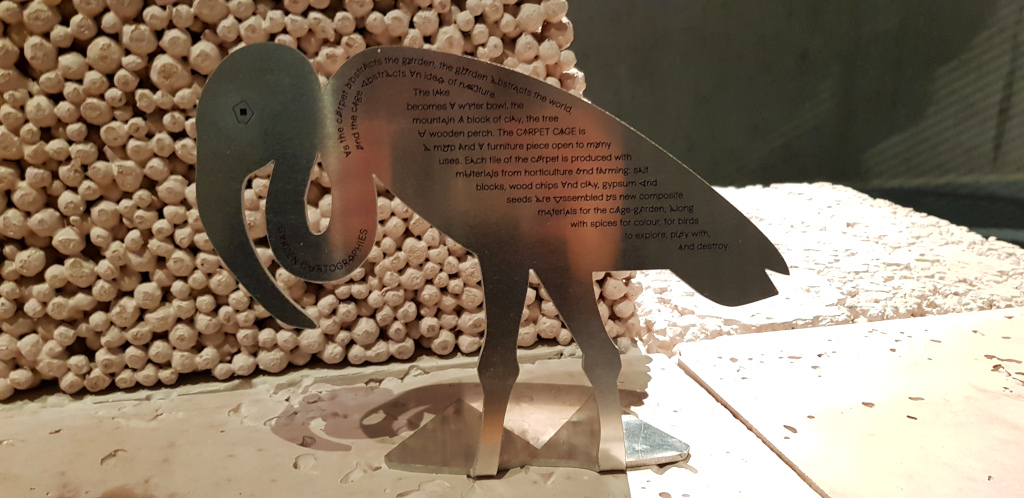
You can see the institutionalization of animals on three scales: the domestic cage, the urban zoo and the territorial national park. The habitats of the humans and animals blend but in the back of your mind, you can’t shake the thought that humankind is controlling the animal environment as much as possible.
Open archives
On the same floor are the open archives: narratives in new and innovative forms created by re-using digital collections of museums and archives. All narratives tell a story that is very recognizable for a human being in the modern world. The forms chosen make the message hit home.
The following three exhibitions can be seen from November 14, 2019 until January 26, 2020.
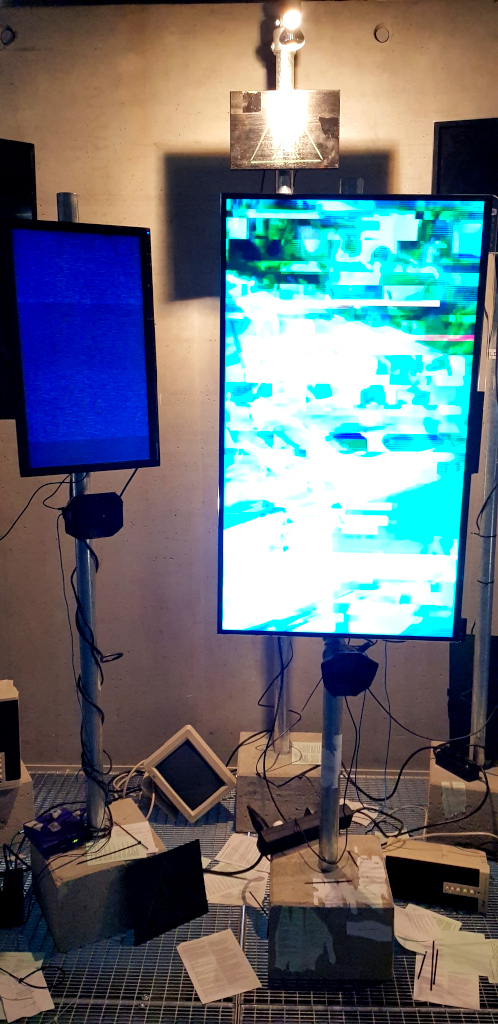
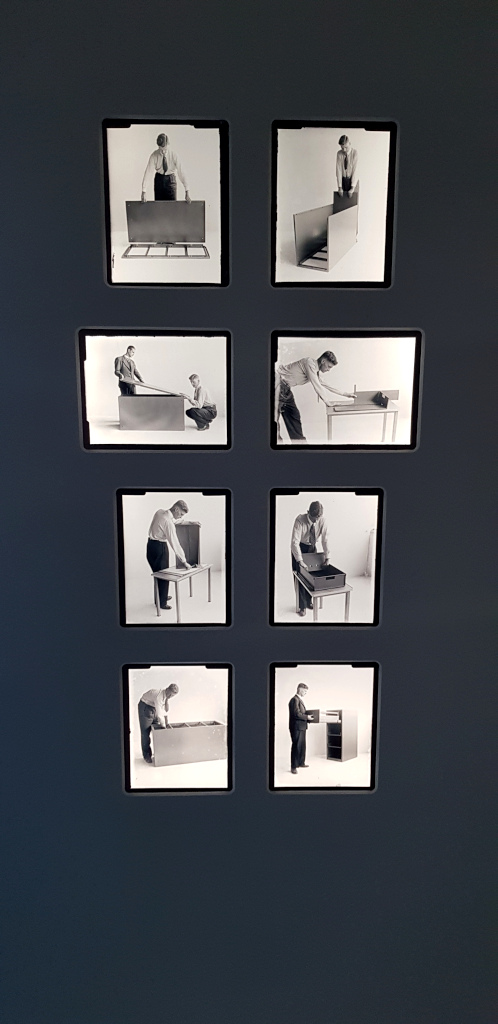
Con/de/struction by Guy Königstein
Through pictures of empty office buildings, you gain insight into spatial strategies within Dutch architecture. Add the right tune and you feel like you’re in a horror movie while you look at the abandoned spaces with notes about demolition, conversions, re-use and camouflage.
The Stolen Archive by Donna Verheijden
This time you’re in a speculative thriller movie while watching the images, audio clips and objects that can be used as characters and movie sets.
The Evening News and the Automatic Plough by Oana Clitan
Big Brother is watching you. The language use and rhetoric in news broadcasting are already showing the first forms of automation. Through tv screens and snippets of texts, you reflect on the emergence of artificial intelligence as the influence of artificial intelligence and machine learning on news consumption today is illustrated.
Final thoughts
With so much going on in the world around us it is nearly impossible to pay attention to all of it. You wonder what is real: is everything really as it seems or are you merely seeing a projection of what they want you to see. And is that projection one made by humans or are we slowly losing control to automation? A natural follow up exhibition would be about Human Encounters where humankind has joined the animals in their controlled environment.
If you’re in Rotterdam, then I highly recommend a visit to this museum. The exhibitions will change over time but I’m convinced the new ones will be just as interesting.
How to get to Het Nieuwe Instituut Rotterdam
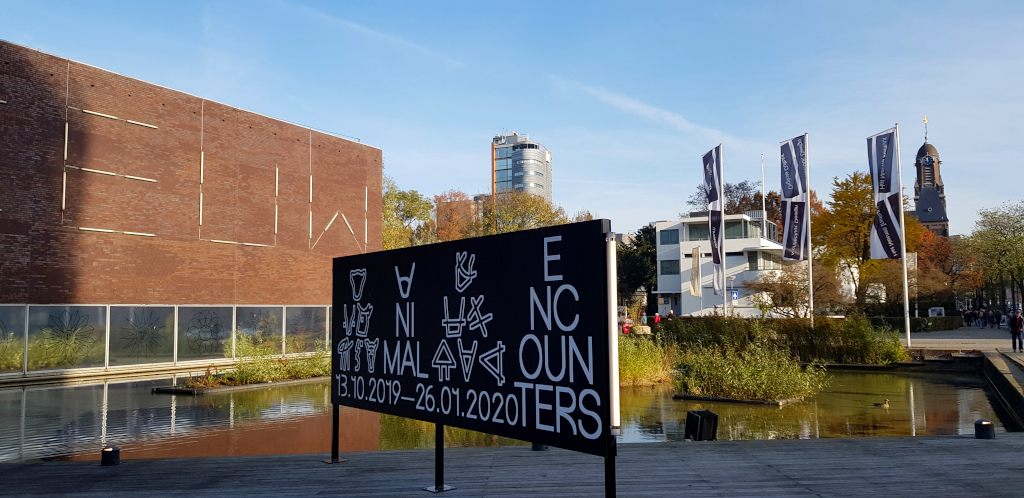
Het Nieuwe Instituut is in the middle of Rotterdam’s Museumpark: an area that also houses Boijmans van Beuningen Museum, Sonneveld House and the Chabot Museum. The museum is only a 15 minutes walk from Rotterdam Central Station. If you’re coming by tram or subway you should get off at the stop Eendrachtsplein and walk about 5 minutes to Museumpark 5 in Rotterdam.
Opening hours
Tuesday – Sunday 11:00 – 17:00 (until 21:00 on Thursdays). Closed on Mondays and on New Years Day, King’s Day (April 27) and Christmas Day.
Tickets
Tickets are 14 euros for adults and free for kids. Entrance is also free with a Rotterdampas or Museumkaart (for those spending more time in the Netherlands). You get a discount with a Rotterdam Welcome Card (tickets will be 10.50 euros).
Pin it for later
